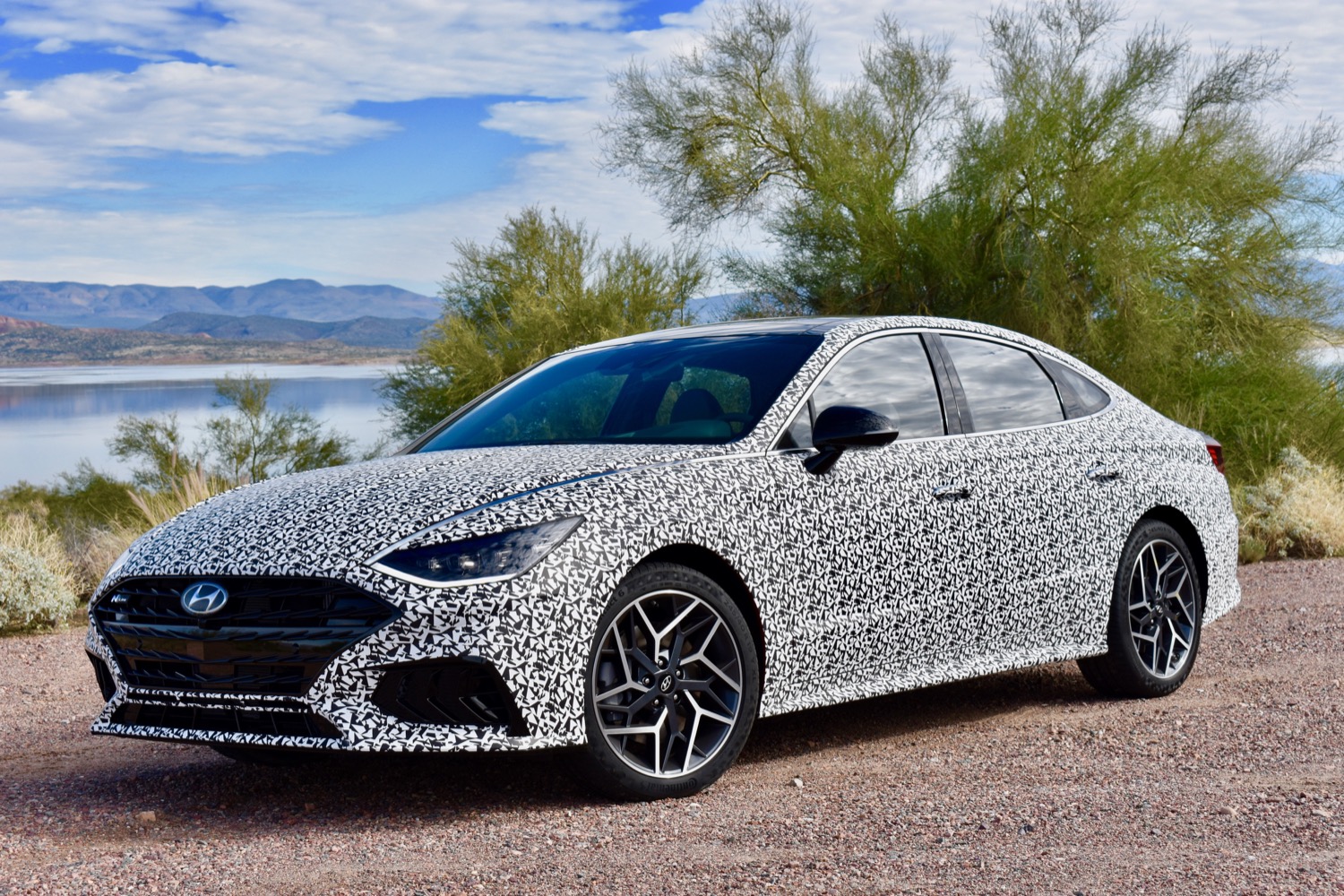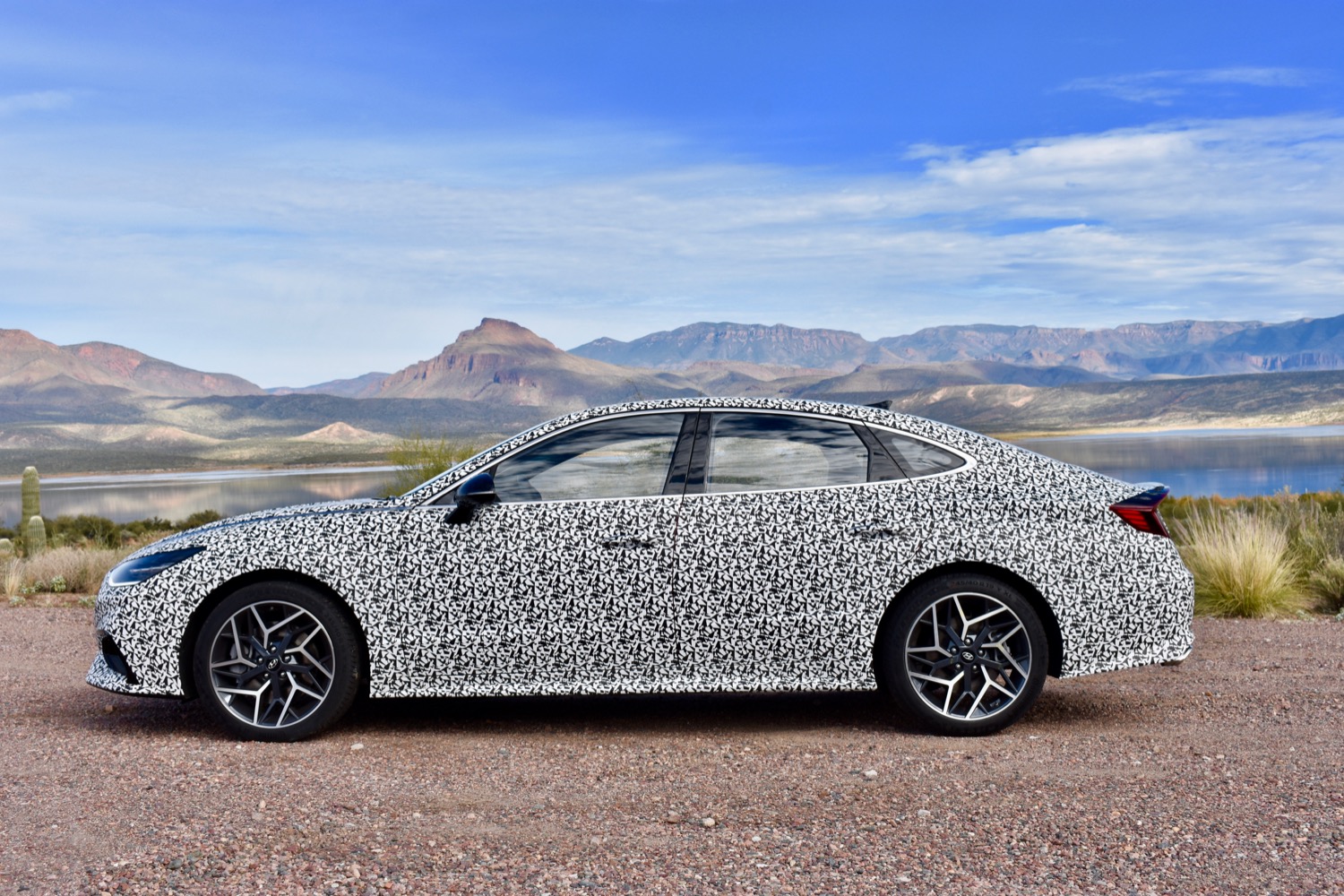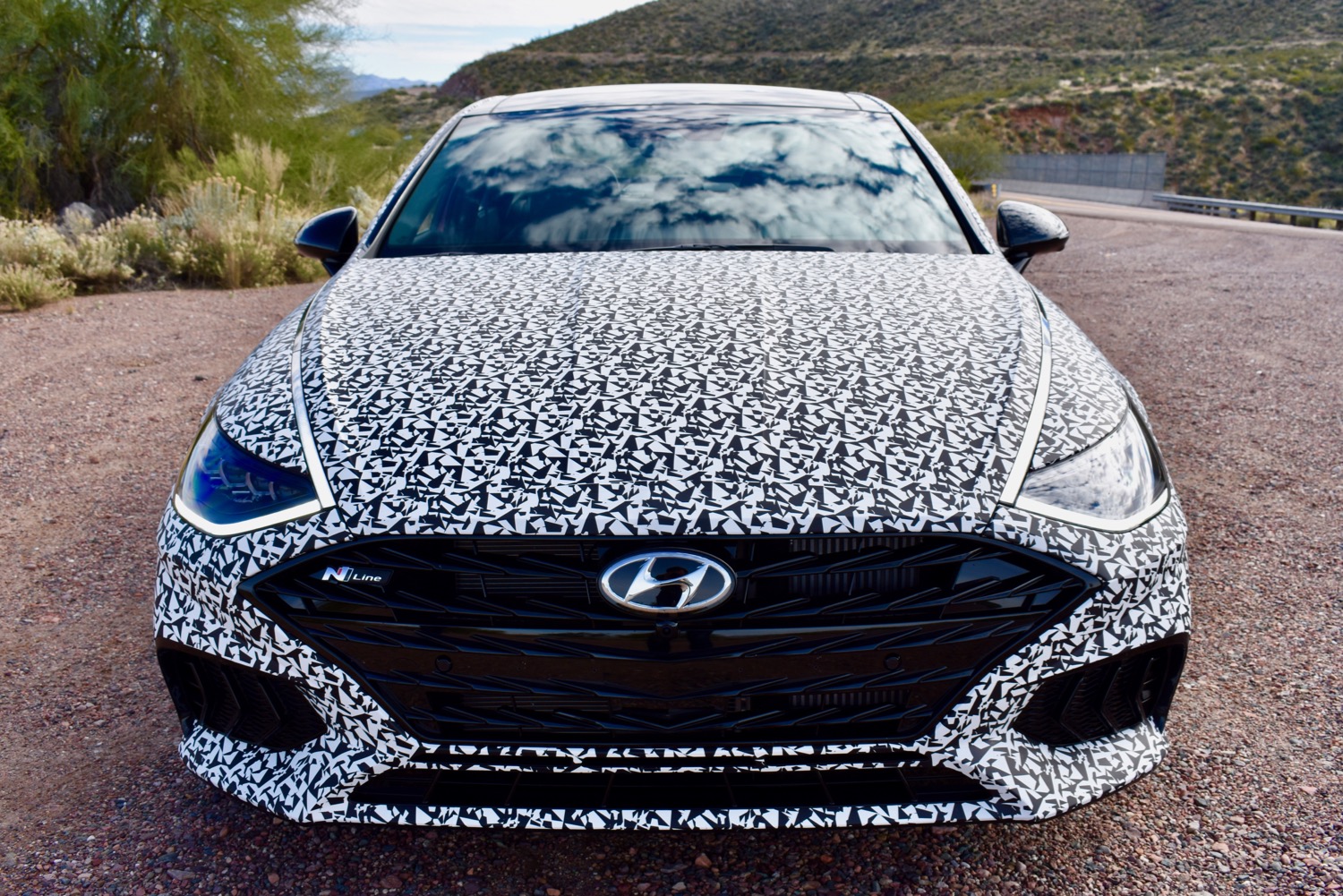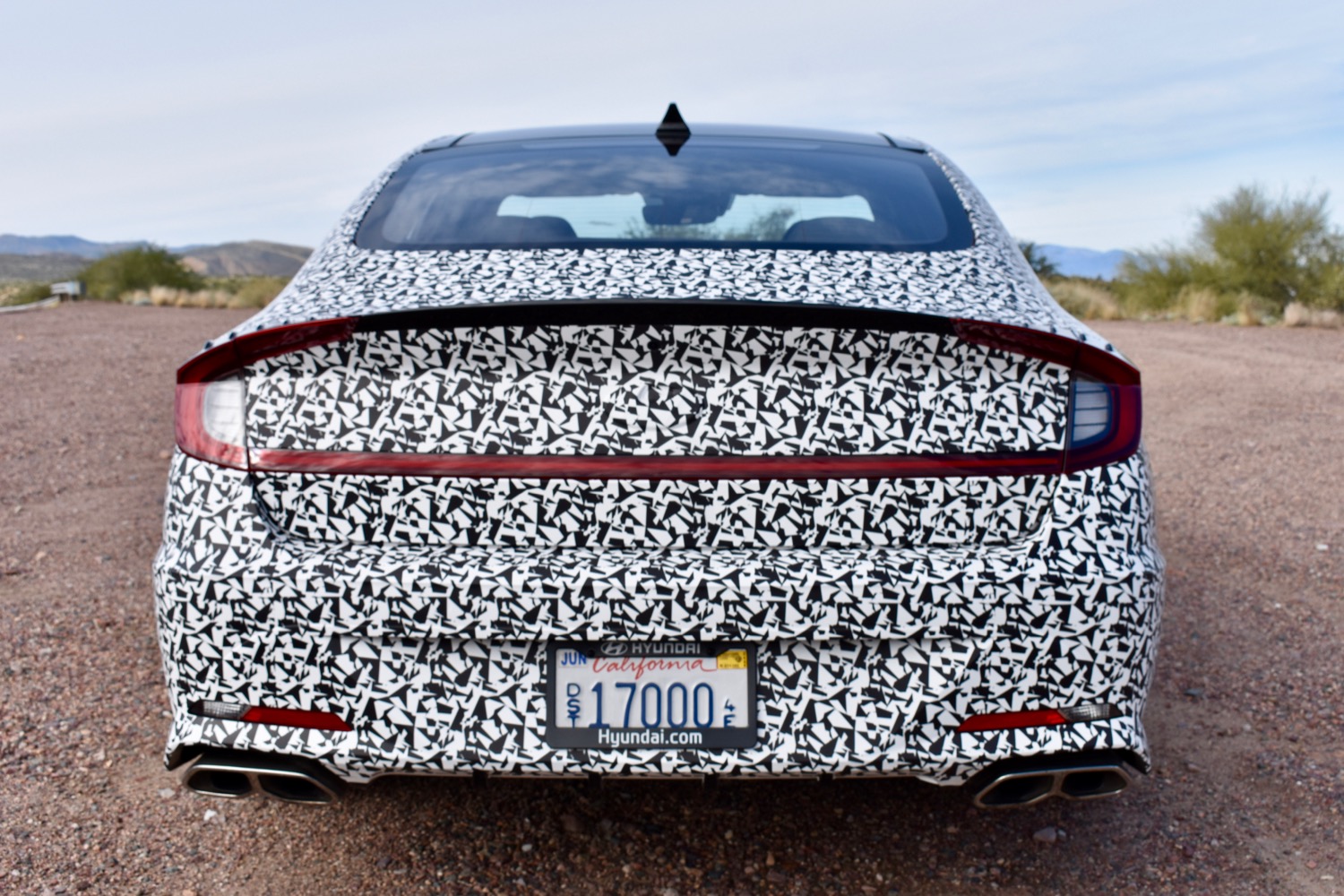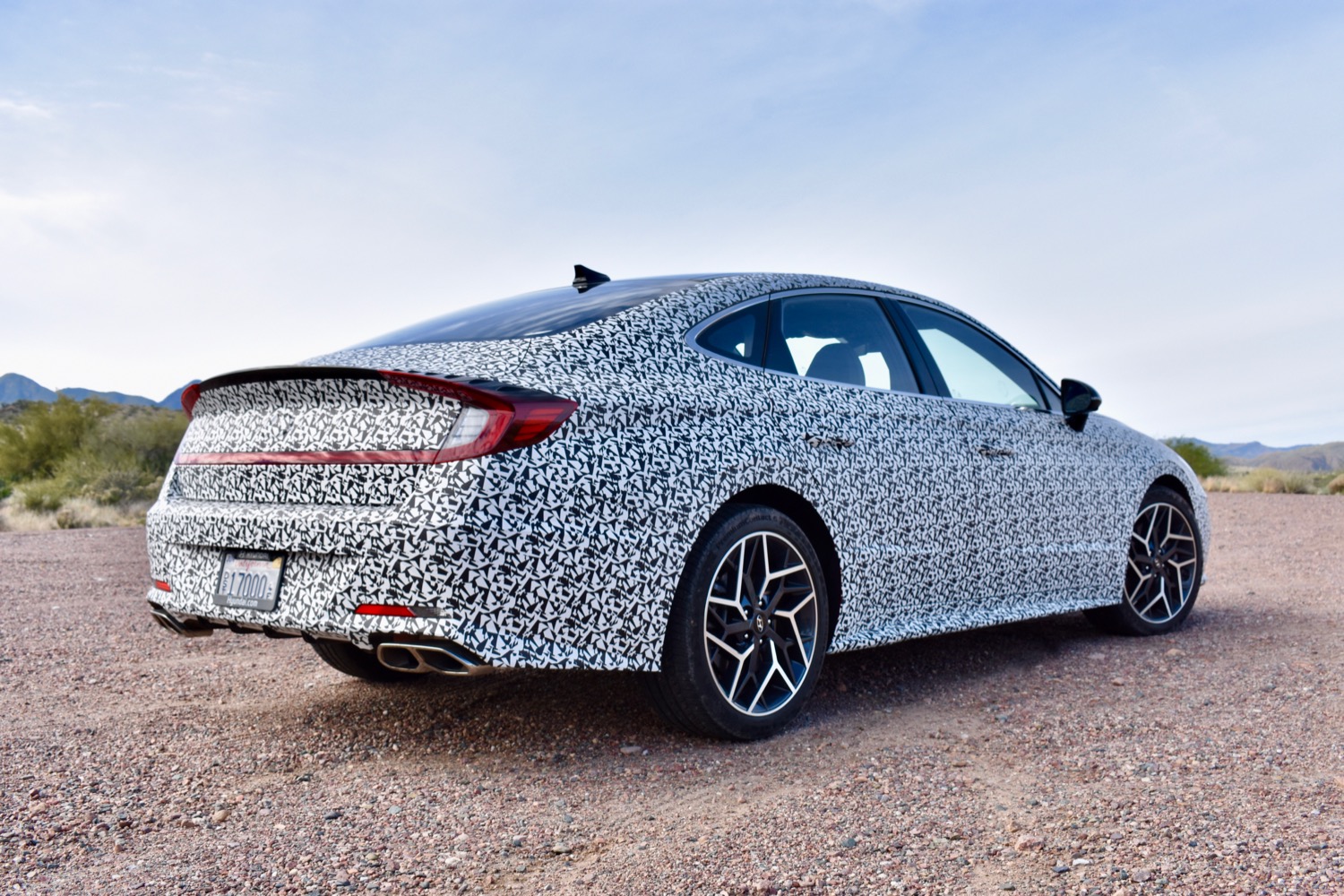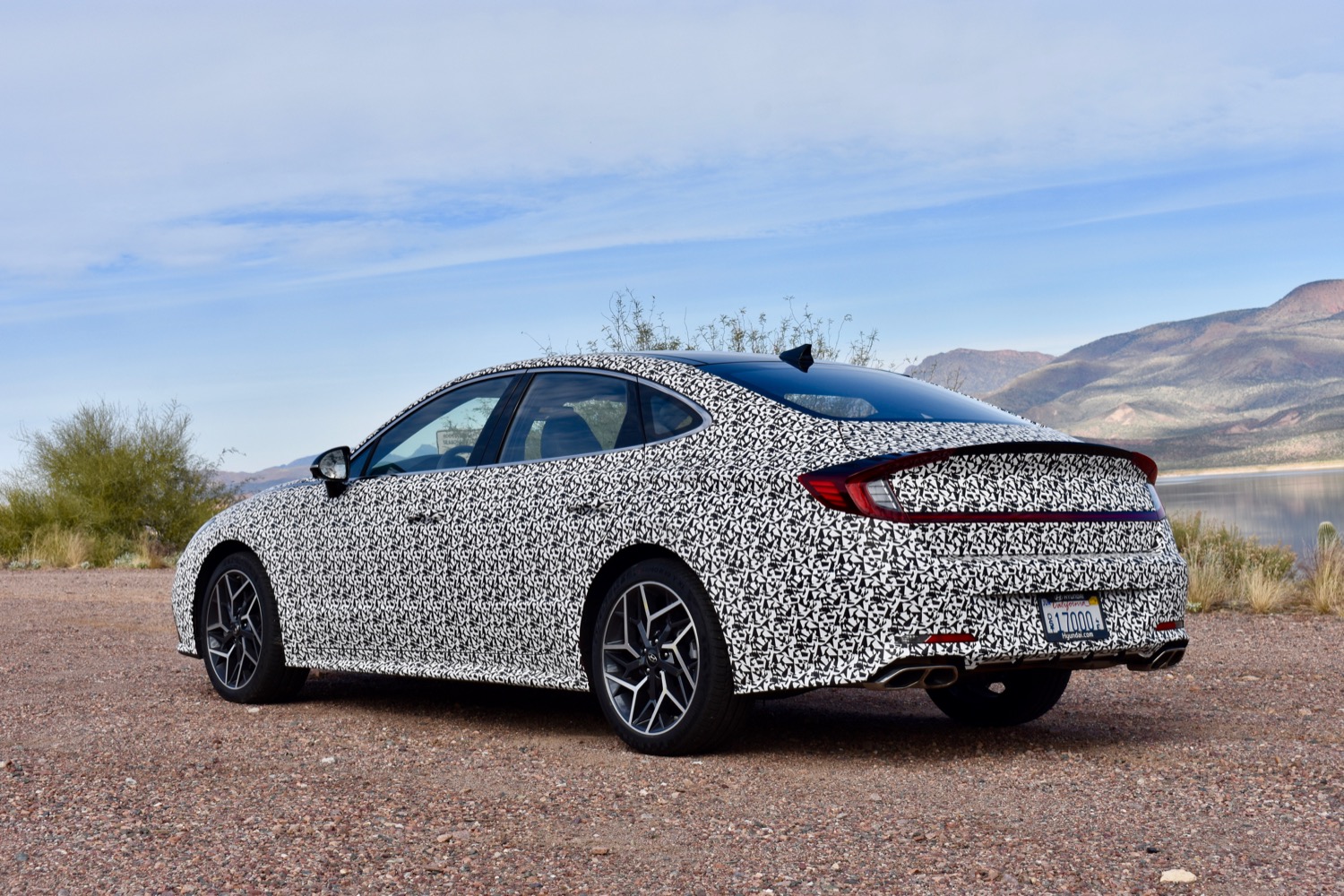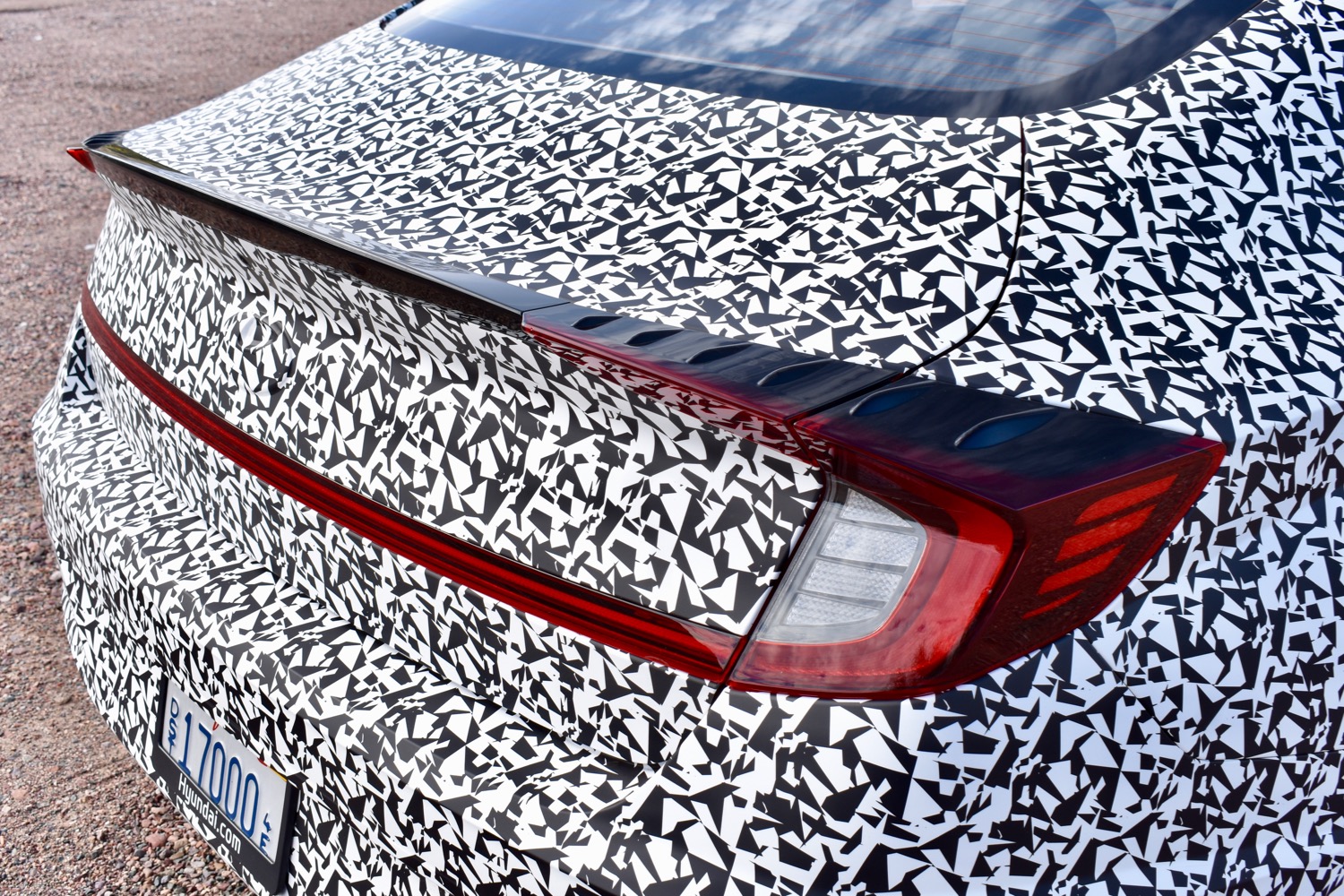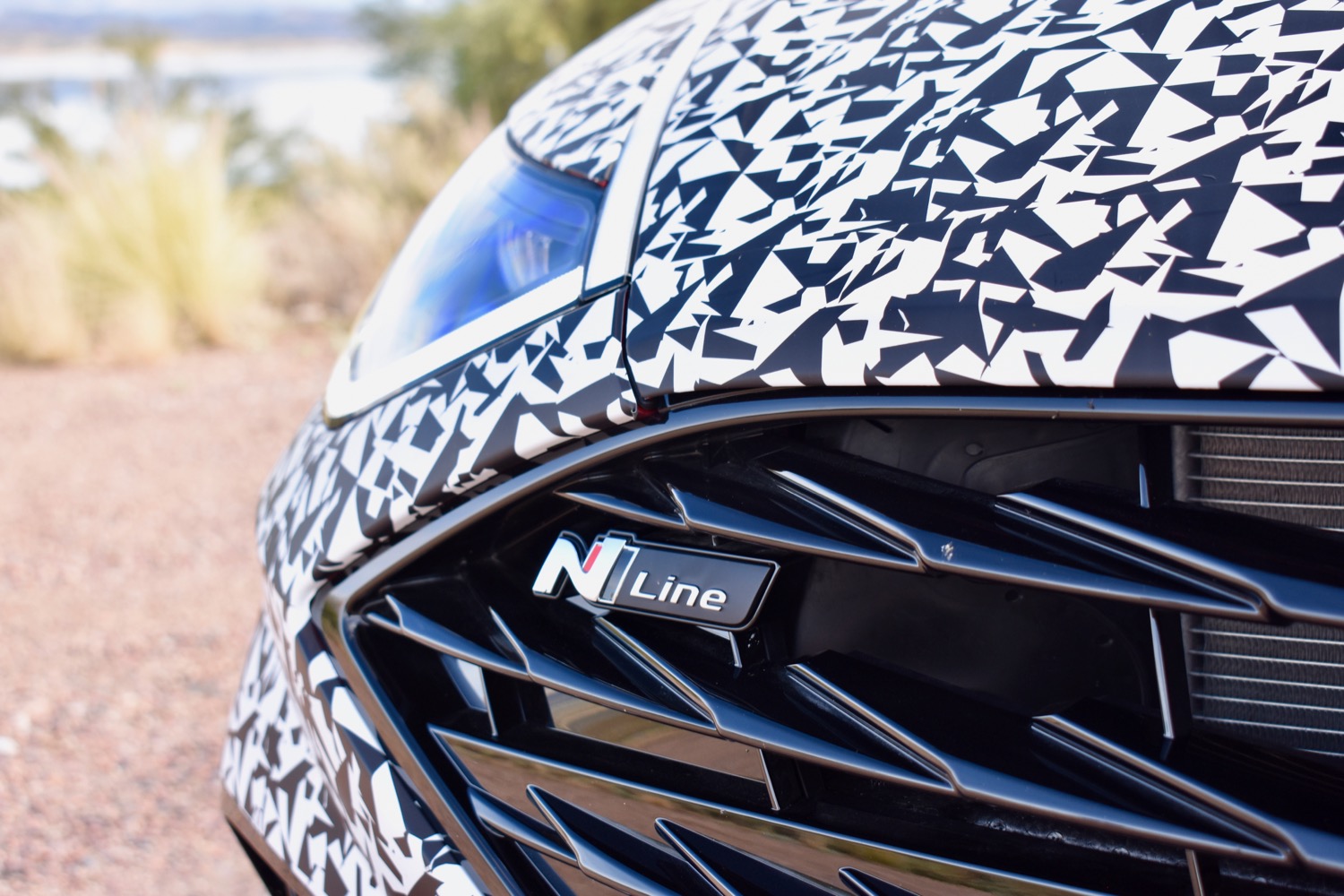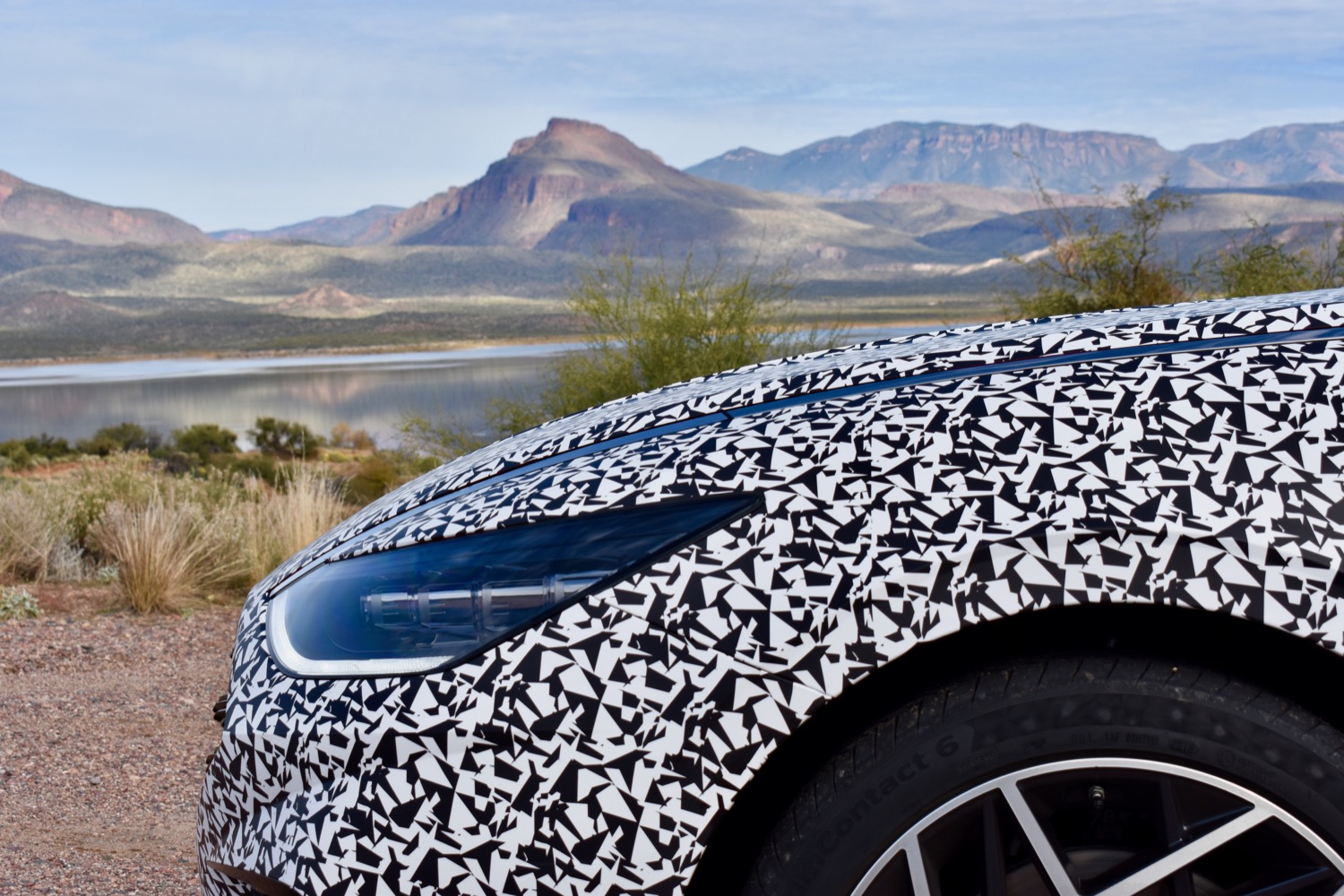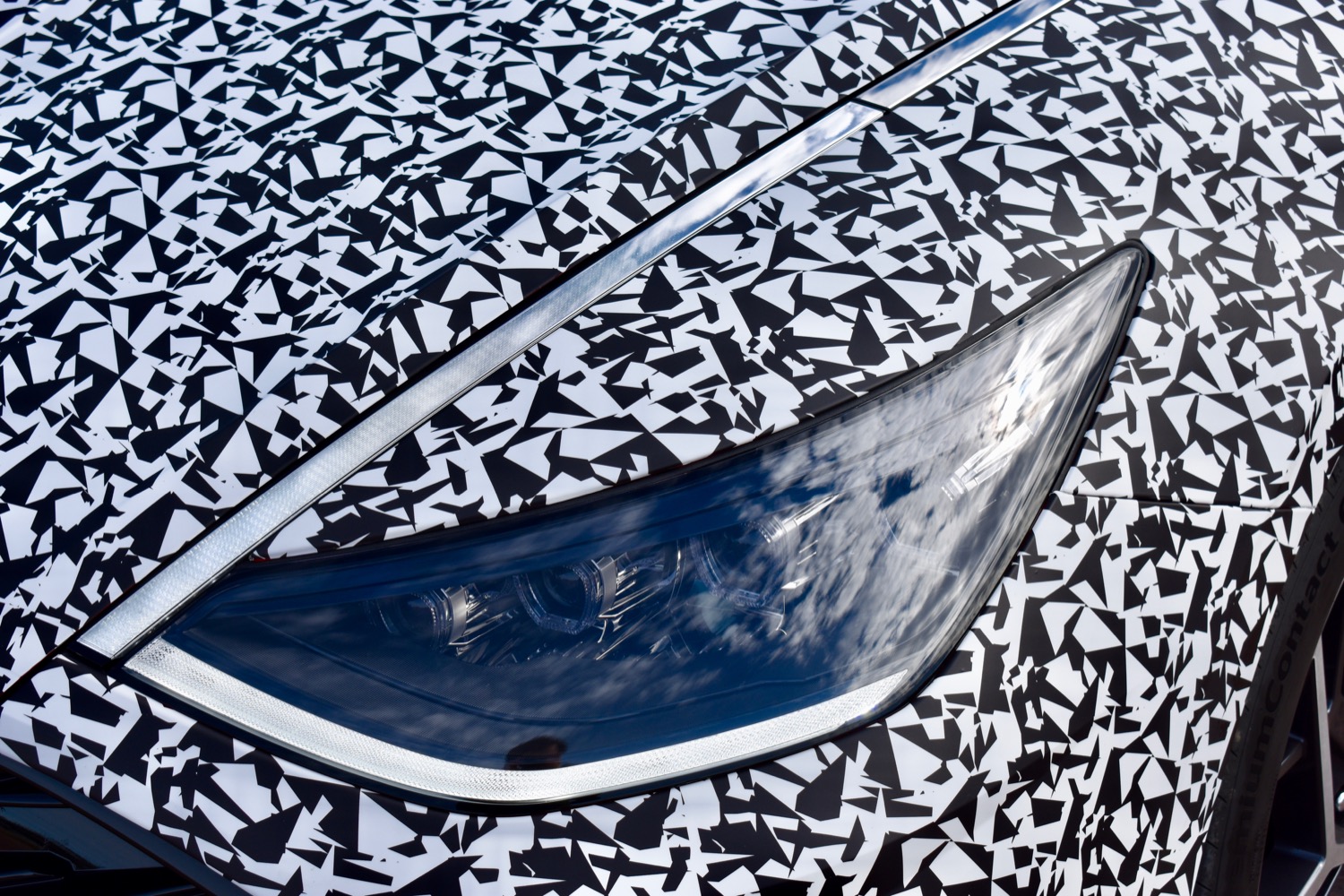The 2020 Hyundai Sonata is a well-executed midsize sedan packed with tech, but it’s missing one thing: Fun. The Sonata is a great commuter car, but it won’t stir the soul. Hyundai is trying to fix that with a sportier N-Line model that offers about twice the horsepower of the standard Sonata. The N-Line doesn’t go on sale until fall 2020, but Digital Trends snagged an early test drive in a prototype.
The main difference between an N-Line and a standard Sonata is the powertrain. Unique to the N-Line, the turbocharged 2.5-liter four-cylinder engine makes 290 horsepower and 310 pound-feet of torque. That’s a significant step up from the Sonata’s base 2.5-liter naturally- aspirated four, which makes 191 hp and 181 lb.-ft., as well as the optional 1.6-liter turbo-four, which can only muster 180 hp and 195 lb.-ft. Like other Sonata models, the N-Line is front-wheel drive, but it gets an eight-speed dual-clutch transmission instead of the base car’s torque converter automatic.
The N-Line is the most powerful Sonata ever, but it falls a bit short of the 301 hp you get from the Toyota Camry TRD’s 3.5-liter naturally aspirated V6. The N-Line has more torque than the TRD, though, and beats the Honda Accord Sport 2.0T in both categories. The Honda i available with a six-speed manual transmission.
The rest of the changes aren’t too dramatic. Hyundai made some tweaks to the suspension for better handling, but mostly by changing small items such as bushings and engine mounts. Some exterior styling changes were made as well, but camouflage on our prototype test car covered up everything except an N-Line badge in the grille and dual exhausts. This treatment is similar to the Elantra GT N-Line, which also gets a model-specific powertrain and similar suspension tweaks. N-Line is a step below Hyundai’s full-bore N performance models, which get more extensive upgrades.
We spent an afternoon driving a Sonata N-Line prototype around the desert near Scottsdale, Arizona, and definitely felt the extra power. In the standard Sonata, acceleration is merely adequate, but the N-Line felt legitimately quick. That quickness did come with a penalty in the form of torque steer — a common problem in powerful front-wheel drive cars. Torque steer is exactly what it sounds like — torque overwhelms the front wheels, tugging the car to and fro. Hyundai’s own Veloster N proves torque steer is a fixable problem, but the solution would likely require more extensive changes than the company is willing to make.
We didn’t notice a dramatic difference in handling, and the N-Line model maintained the standard Sonata’s excellent ride quality. The dual-clutch transmission does make a difference however, delivering appreciably faster shifts. Toggling between the different drive modes yielded aggressive shifts in “sport,” and more refined behavior in “comfort.” The different drive modes didn’t seem to have much effect on other aspects of the car, however.
The Sonata N-Line’s fall 2020 on-sale date means it will likely be considered a 2021 model. Hyundai hasn’t released pricing, but spokespeople told Digital Trends that the N-Line will fill the place currently held by the SEL Plus trim level as the sportiest Sonata. That means the N-Line will likely be priced somewhere in the high $20,000 range, but below the $34,230 price tag of the top Sonata Limited trim level.
